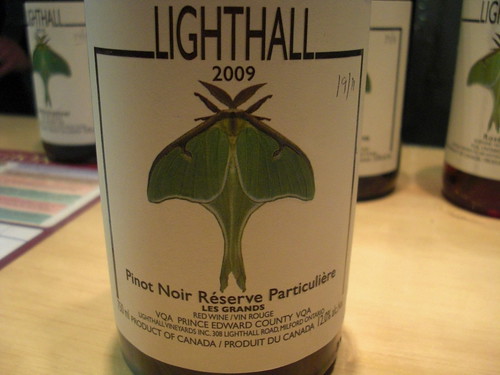
PRINCE EDWARD COUNTY — You learn, after a few trips of trying, that it’s just not possible to visit more than three or four Prince Edward County wineries in a day — no matter how far you’ve come or how hard you try.
It was our third visit in a series with Suresh Doss, publisher of Spotlight Toronto (a veteran of the Toronto-County circuit), and along for the ride were Ontario wine enthusiast Rick Bates and Spotlight Toronto writer and freelancer Mike Di Caro.
With Rick at the wheel of his comfortable rig (a big covered flatbed in back for his vinous loot) he did everything he could (within the law, of course) to get us into the County in record time.
It’s just that everyone is so darn friendly and accommodating in PEC. One tasting at a single estate leads to another and another and the time just slips by.
At each winery you are met by the winemakers (or the owners, who are often both), who love to engage in lively discussions on what is unique about County wines and why it is so special here.
And, indeed, it is special in the County. More country, more rustic, more rural, more farm, more expanse … it just feels like more. It’s the Woodstock of wine. Reminiscent of that Crosby, Stills, Nash and Young song (and I know this dates me, but what the hell):
Well I came upon a child of God, he was walking along the road
And I asked him tell where are you going, this he told me:
(He) said, I’m going down to Yasgur’s farm, going to join in a rock and roll band.
Got to get back to the land, and set my soul free.
We are stardust, we are golden, we are billion year old carbon,
And we got to get ourselves back to the garden.
Substitute Yasgur’s farm for Prince Edward County and winery for rock and roll band and this song could have been written for the influx of vignerons into the County much like the swarm of hippies who ventured into Woodstock on that generation-changing weekend billed as 3 Days of Peace & Music in August of 1969.
It is a magic region of open spaces and sparsely planted land, a place where cows and dairies are slowly being replaced with Pinot Noir, Chardonnay and restored barns. Where wine meets farm to table cuisine and old jeans, sturdy plaid lumber jackets and Blundstones are everyday attire.
It just feels like home should feel like when it was simpler times.
•••
Our journey this time took us on a meandering route (sorry, Rick, but it was!) that included Lighthall Vineyards, The Grange of Prince Edward, Harwood Estate Vineyards, a stop at Rosehall Run (so Suresh and Mike could record a podcast on County wine), and a curious stop at the Keint-He that proved fruitless as the winery was on that very day switching winemakers (much to our surprise) from Geoff Heinricks to former associate Hidden Bench winemaker Jay Johnston.
Here’s what we found at three of those wineries, along with some notes from recent tastings of both Casa-Dea and some new Karlo Estates wines.
Lighthall Vineyards
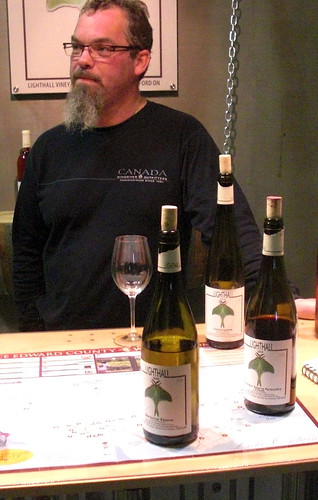
Lighthall Vineyards is a small operation with a production of only 900 cases of wine and the entire operation contained in a corrugated steel building where the wine is made and sold.
Owner-winemaker Glenn Symons says the utilitarian nature of his winery is built that way on purpose, in order to maximize efficiency as well as to allow him to focus more directly on the wines.
The tasting bar is on the edge of the production area, where visitors can enjoy an authentic experience of the winery production environment, which is so very true. The smell of fermentation was evident on our visit.
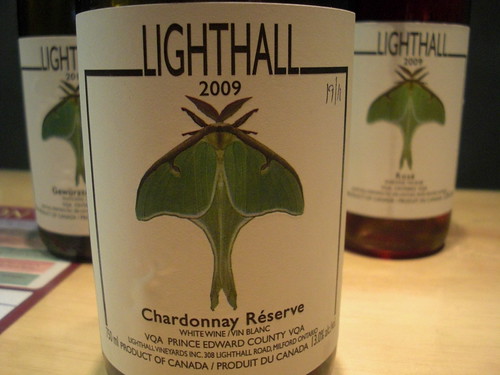 Lighthall uses traditional old-world techniques in its winemaking and is the only winery in the County using a concrete fermentation vessel for its red wines, which allow for both typically healthier fermentations as a result of the oxygen penetration into the tank through the porous concrete. It also helps with temperature moderation by preventing sudden spikes in temperatures as a result of fermentation.
Lighthall uses traditional old-world techniques in its winemaking and is the only winery in the County using a concrete fermentation vessel for its red wines, which allow for both typically healthier fermentations as a result of the oxygen penetration into the tank through the porous concrete. It also helps with temperature moderation by preventing sudden spikes in temperatures as a result of fermentation.
All wines are aged exclusively in French oak barrels with a portion of the wines fermented in the same barrels. The wines are aged on the lees, giving what Symons says is a more complex and rounder mouthfeel to the finished wines.
The primary focus at Lighthall is on estate-grown Chardonnay and Pinot Noir, with sparkling wine, late harvest and icewine products coming online with the 2011 vintage. It sources ultra-premium Cabernet Franc for Rosé, and Gewürztraminer, from the Wisner Vineyard in Niagara’s Vineland area.
Here’s what we enjoyed from a tasting of the wines available:
Lighthall Rose 2009 ($17, 86 points) — A nose of subtle raspberries, cranberries and dried herbs. Made from Cabernet Franc, it shows field raspberry and bramble in a dry, austere and racy style.
Lighthall Chardonnay Reserve 2009 ($25, 91 points) — A wonderful Chardy with light vanilla toast, bright apple, citrus and mineral notes. I love the energy and tension on the palate and depth of fruit and minerality that works well with the deft touch of spice and oak. Gorgeous wine.
Lighthall Reserve Particuliere Les Grands Pinot Noir 2009 ($50, 91 points) — Only two barrels were made of this Pinot that spent eight months in all new oak. It shows ripe cherry, raspberry, smoke and bramble on the nose. It’s nicely structured on the palate with cherry-bramble-earth flavours to go with oak-inspired spices and ripe tannins. Racy acidity, firm and pretty Pinot with a long and graceful life ahead. Sadly, no County Pinot was made in 2010 due to unforeseen circumstances that left the grapes unharvested.
Lighthall Gewurztraminer 2010 Wisner Vineyard, Niagara ($25, 88 points) — A nose of ripe tropical fruit, honeysuckle, lychee nut, grapefruit and rose petals. It’s textured and layered on the palate with juicy fruit, not overly spiced and maintains decent acidity.
The Grange of Prince Edward Vineyards and Estate Winery
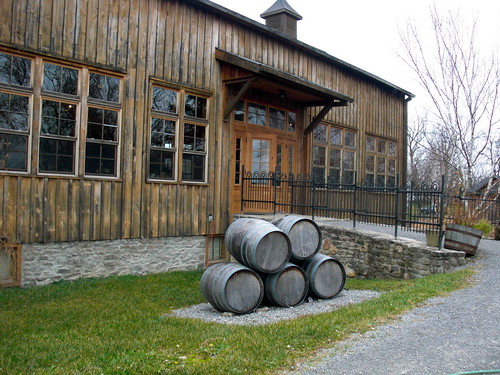
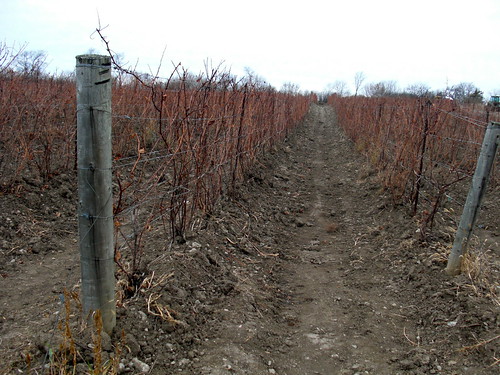
It’s a long way from the fashion houses of Paris and long photo shoots for Vogue magazine to the vineyards of Prince Edward County, but somehow Caroline Granger looks just as gorgeous behind the wine tasting bar at her Grange of Prince Edward County winery as she did in the pages of those glossy fashion magazines she posed for, even after a long night of work in the winery.
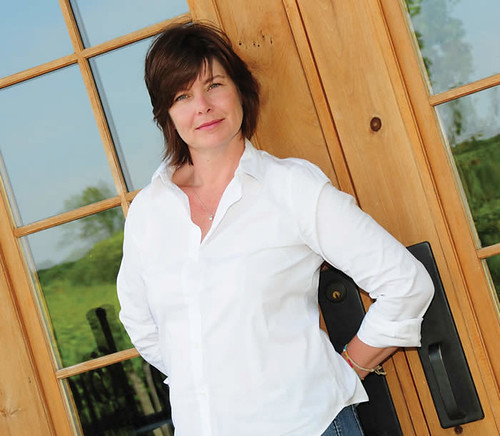
The Grange has a large, by County standards, production of 10,000 cases annually. The agribusiness was established on an over-600-acre family farm purchased in the early 70s by Granger’s father, Robert Granger.
There are 60 acres under vine, from six distinct vineyard blocks and plantings, including Pinot Gris, Cabernet Franc, Sauvignon Blanc, and enough Pinot Noir to make it one of the larger vineyards in Canada.
After our visit with Granger, during a followup call, she told me that the winery is now in the midst of trimming down the production and reining in some of the bottlings to get back to a more manageable production level. Granger was just working on a new business plan (that includes a all-female vineyard crew) when we talked but I get the sense that the portfolio will be trimmed down considerably.
At the moment, the wines are made in two tiers: the Grange of Prince Edward single vineyard wines (premium wines) and Trumpour’s Mill, a line of accessible table wines.
Here’s what I liked from the current portfolio.
Grange Brut 2008 ($30, 90 points) — The Brut is a traditionally made blend of Chardonnay and Pinot Noir with a toasty brioche nose, citrus and fresh apple. The flavours on the palate are rich and lively with zesty citrus, grapefruit, and toasted flavours lifted by refreshing acidity. Very nice.
Grange Isabella Block Brut Rose 2008 ($34, 88 points) — A lovely nose of strawberry and cherry fruit with baked bread notes and vanilla undertones. It’s bright and fruity on the palate with subtle minerality and bite through the finish.
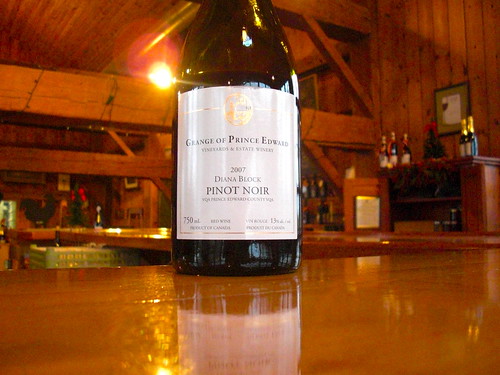 Grange Victoria Block Chardonnay 2007 ($35, 87 points) — An interesting Chardonnay showing ripe tropical fruits, poached pear, apple pie, sweet spices and minerals. It’s layered and loaded with mature fruits and fine oak stylings. It’s starting to get a little flabby in the mouth, so drink up.
Grange Victoria Block Chardonnay 2007 ($35, 87 points) — An interesting Chardonnay showing ripe tropical fruits, poached pear, apple pie, sweet spices and minerals. It’s layered and loaded with mature fruits and fine oak stylings. It’s starting to get a little flabby in the mouth, so drink up.
Grange Diana Block Pinot Noir 2007 ($35, 92 points) — It’s a little odd to see a current release from 2007, but here’s one that bucks the trend of over-extracted wines from that hot vintage. The nose shows pretty cherry fruit, light oak spices, and a touch of earth and minerals. It’s seamlessly integrated on the palate with red fruits, spice and tannins all in balance and lasting through the finish. You can hold this or drink up now.
Grange Trumpour’s Mill Estate Cabernet Franc 2008 ($17, 86 points) — A Cab Franc that’s just this side of too lean, with an interesting nose of plums, cassis, bramble, clove spice, licorice and some dried herbs. The cherry-cassis flavours on the palate are joined by roasted peppers, spice, herbs and firm tannins.
Grange Late Harvest Sauvignon Blanc 2010 ($25 for 500 Ml, 92 points) — Now, this wine really divided our group, but, for me, I loved it. Yes, it’s highly unusual, with up to 30% of the fruit botrytised and the wine fermented and aged in neutral oak. It shows peach, mango, lemon meringue, tropical fruit and lovely exotic spices. It’s lush and layered on the palate with honey sweetness and a long finish. The wine has been so popular for Grange that the labels never even made it onto the bottles.
Harwood Estate Vineyards
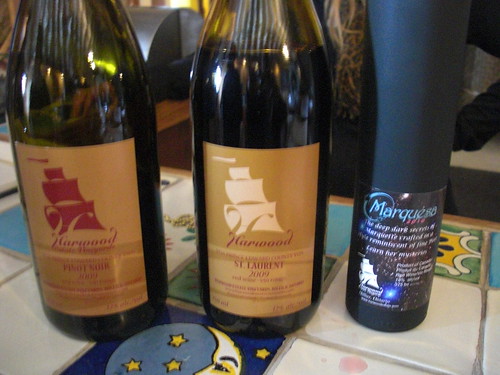
Our group is met by the enthusiastic Lauren Horlock, winemaker at Harwood Estate Vineyards, in the all-in-one solar-powered winery and tasting room.
It is a comfortable feel even with the production facility, tasting room and barrel cellar all enclosed in one building in Hillier.
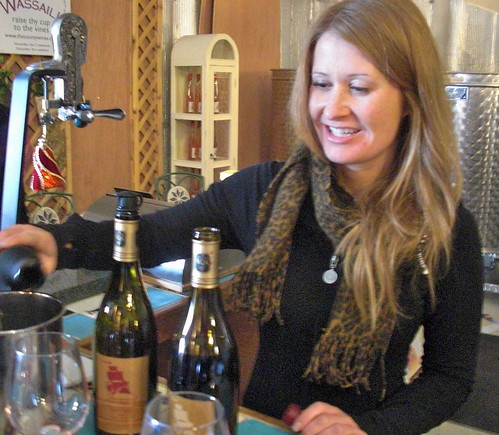
A total of seven different wines are hand-crafted at Harwood including Gewurztraminer, Pinot Noir, St. Laurent, Pinot Gris, Rose, Cabernet Sauvignon and a Port-style wine made with the Marquette grape.
Here’s what I like from what we tasted:
Harwood Pinot Noir 2009 ($29, 88 points) — An expressive nose of black cherry, cassis, bramble, spice and vanilla. It’s earthy and complex on the palate with red fruit flavours and loam mingling with County minerality through the finish. Will age nicely. Aged in three different types of oak barrels (French, Prince Edward County, and American).
Harwood Marquesa 2010 ($29 for 375 Ml, 89 points) — Made in the style of a fine Port, this fortified wine, crafted from the Marquette grape, is a highly unusual treat with an intoxicating nose of sweet raisin, currants, lavish spice, chocolate and cassis. It’s a touch hot on the palate but delivers a wonderfully intense experience with rich dark fruits, sweet spices and roasted nut flavours. A wine to enjoy on a cold winter’s night beside the fire.
Harwood St. Laurent 2009 ($20, 85 points) — St. Laurent is a varietal that is the genetic grandchild of Pinot Noir and has become popular in Austria. Horlock feels it’s ideally suited to Hillier soils and climate. It shows black cherry, blackberry and perfumed cassis and spice on the nose. It’s a full-bodied red with lush wild berries on the palate, spice and smoky notes through the finish.
•••
And some other County wines tasted recently:
 Karlo Estates Chardonnay CHOA 2010 ($25, 89 points) — An interesting concept from the inventive folks at Karlo. This is fermented and aged in for three months in “CHOA” barrels, which are slow toast barrels made from mixed woods of Cherry, Hickory, Oak and Ash (hence CHOA), all grown in Prince Edward County. The nose shows sweet spice, pear, melon, clove, nutmeg, toasted caramel and vanilla. It has similar depth on the palate with pear-peach-melon fruit flavours joined by roasted almonds, nougat, sweet spices and balanced out by juicy acidity. Quite tasty.
Karlo Estates Chardonnay CHOA 2010 ($25, 89 points) — An interesting concept from the inventive folks at Karlo. This is fermented and aged in for three months in “CHOA” barrels, which are slow toast barrels made from mixed woods of Cherry, Hickory, Oak and Ash (hence CHOA), all grown in Prince Edward County. The nose shows sweet spice, pear, melon, clove, nutmeg, toasted caramel and vanilla. It has similar depth on the palate with pear-peach-melon fruit flavours joined by roasted almonds, nougat, sweet spices and balanced out by juicy acidity. Quite tasty.
Karlo Estates Van Alstine White 2010 ($29, 500 Ml, 88 points) — This is the white matcher to Karlo’s successful red fortified wine that goes by same name. It’s made with estate-grown Frontenac Blanc and Gewurztraminer. The nose shows lychee, apricot, marmalade, cloves and hazelnuts. It’s ripe and sweet on the palate with flavours of mango, honey, layers of spice, grapefruit concentrate, nutmeg, toffee and some heat on the back of the palate. There’s a lot going on with this unique fortified white.
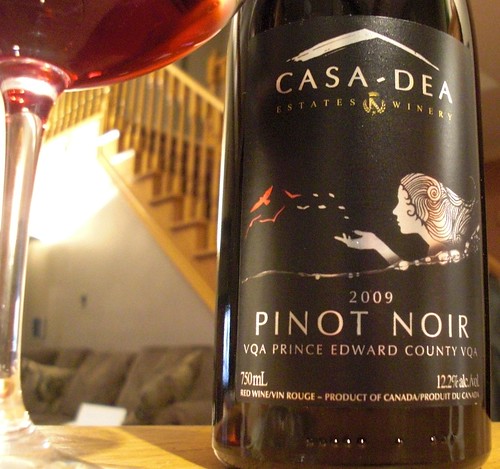 Casa-Dea Unoaked Chardonnay 2009 ($16, 89 points) — A well-made Chard of the unoaked kind that shows fresh peach and apple aromas, nuts and minerals on the nose. It’s racy and clean on the palate with refreshing apple-peach flavours and juicy acidity.
Casa-Dea Unoaked Chardonnay 2009 ($16, 89 points) — A well-made Chard of the unoaked kind that shows fresh peach and apple aromas, nuts and minerals on the nose. It’s racy and clean on the palate with refreshing apple-peach flavours and juicy acidity.
Casa-Dea Pinot Noir 2009 ($20, 88 points) — This Pinot, especially at this price point, really impressed me the more I drank it. It’s text book Pinot, reminding me of village level Burgundy, with beautiful dark cherry, clove, mineral and cedar notes on the nose. The flavours in the mouth range from sour cherry to wood spice and minerals. Just delicious from start to finish with nothing out of balance or over done.
Casa-Dea Riesling 2009 ($17, 88 points) — I am happy to see a County-made Riesling in this winery’s well-planned portfolio. Top County Rieslings have such gorgeous minerality and natural acidity. The nose shows citrus, white peach and ripe apple notes to go with those underlying wet-stone notes. It’s racy on the palate with zippy, fresh apple and citrus fruit on a riverbed of minerals. Tart, fresh, lively and delicious.
Casa-Dea Cabernet Franc Rose 2009 ($15, 85 points) — Lovely strawberry-cherry aromas with lighter cherry fruit notes on the palate with a touch of citrus. It’s a juicy style with medium acid.
Enjoy!


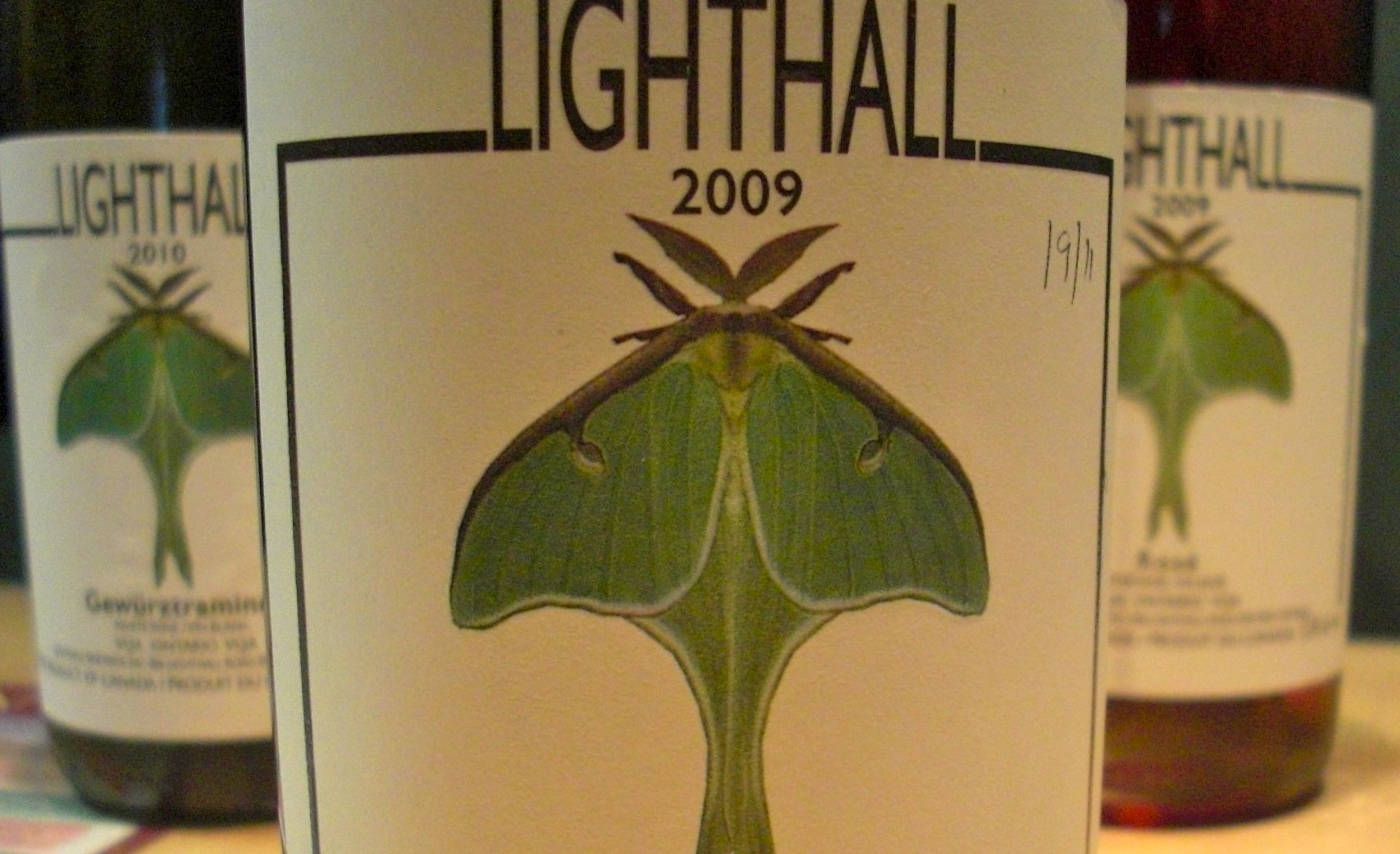



Comment here